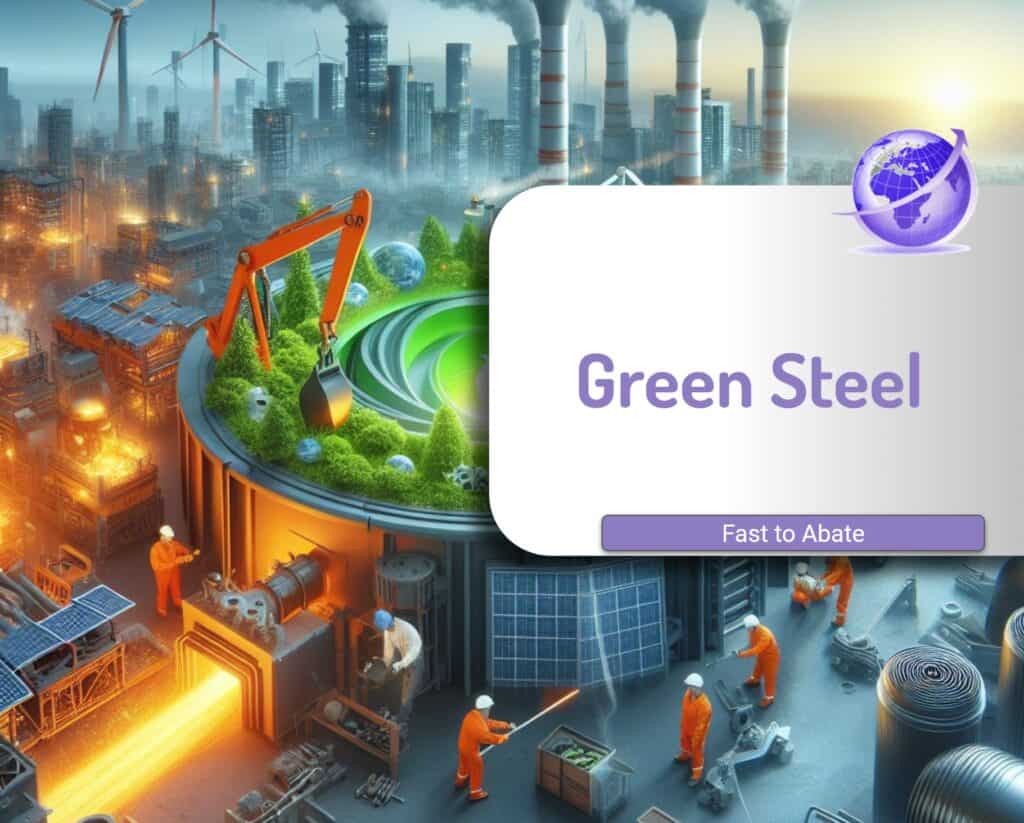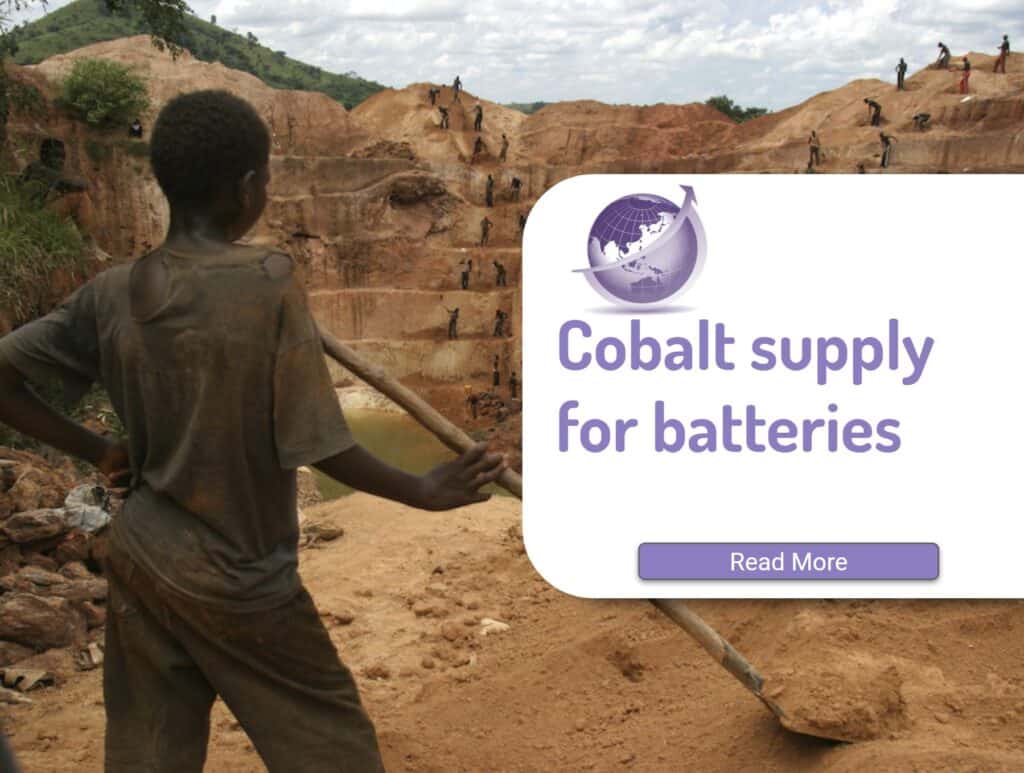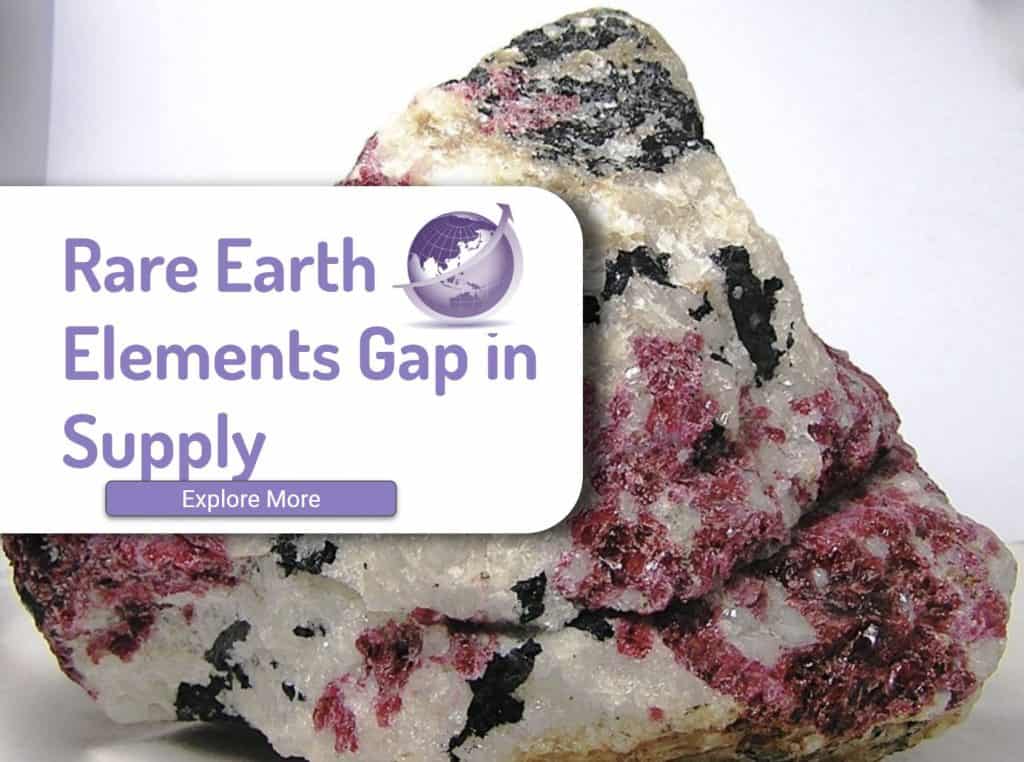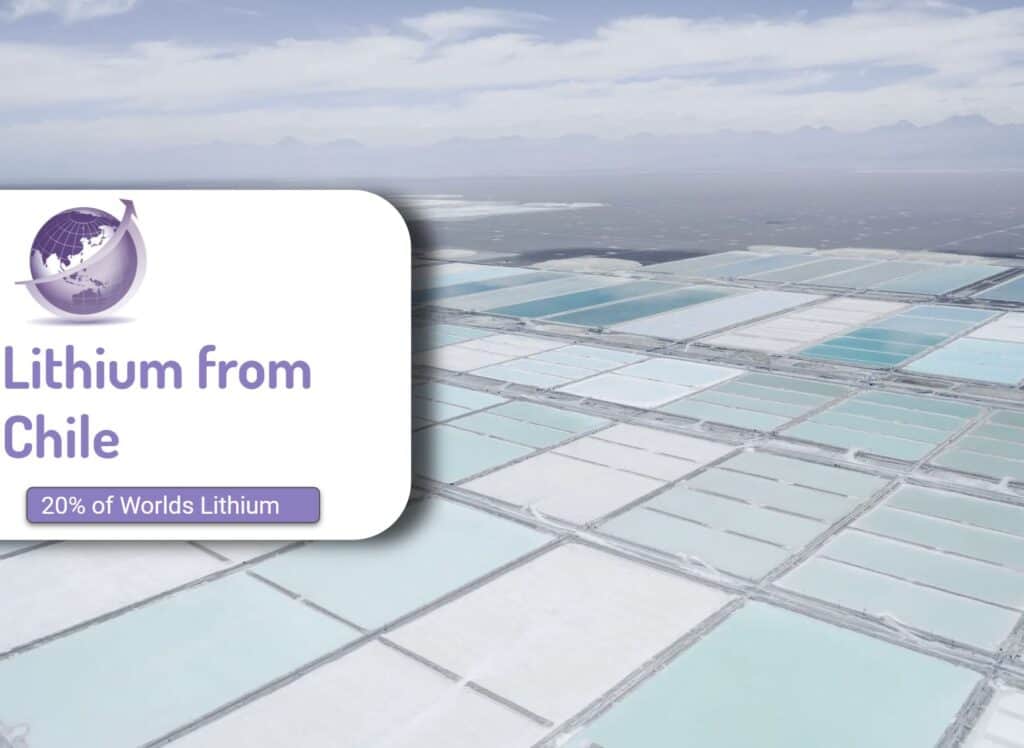Steel manufacturing produces more CO2 than any other heavy industry, comprising around 8% of total global emissions. Globally, crude steel production totalled 1,951 million tonnes (Mt) in 2021. This production is spread all over the world, including India, Japan, and the U.S., with the vast majority (1,033 million tonnes) concentrated in China. On average, almost two tonnes of carbon dioxide (CO₂) are emitted for every tonne of steel produced.
Each year, steel emits about 3.2 billion tonnes of CO2. Annual Emissions are equivalent to 403 million households or nearly 700 million cars per.
Five Processes to Abate Emission
- Hydrogen-based Direct Reduced Iron -DRI
- Electric Arc Furnaces – EAF
- Molten Oxide Electrolysis – MOE
- Biomass oxide reduction (swaps coal for biochar)
- Carbon Capture (CCS is a scam)
Americans have 16 tonnes per person. China 8. Africa 1. From a car (1 tonne) to hospitals, railway, schools, steel per capita may be a better indication of wealth than GDP.

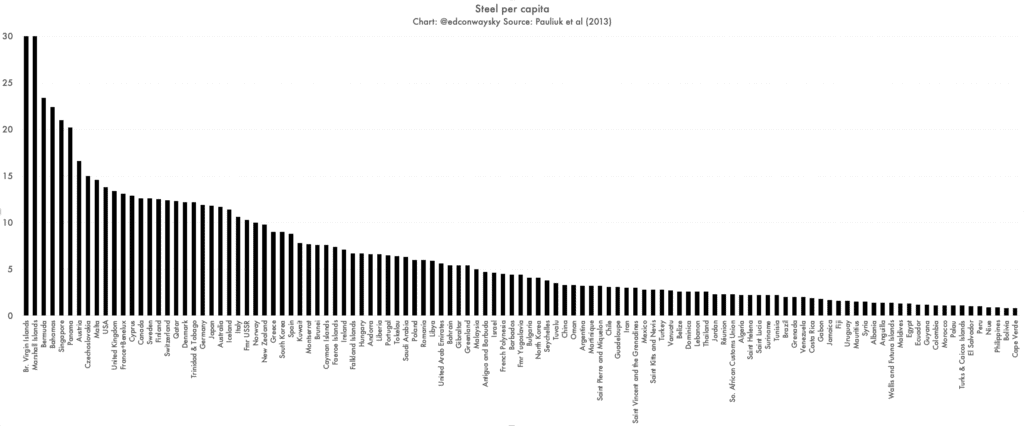

Efforts are underway to move steel production away from coal-fired furnaces to ones powered by electricity or hydrogen.

But producing green steel is an expensive process – and the industry needs to scale up rapidly to hit net-zero targets.
It says 31% of current steelmaking capacity uses electric furnaces, but only 28% of capacity under construction will use the technology.
Are Steel Companies Changing?
To change by 2050, are steel companies considering change? No. So what is the barrier to change?
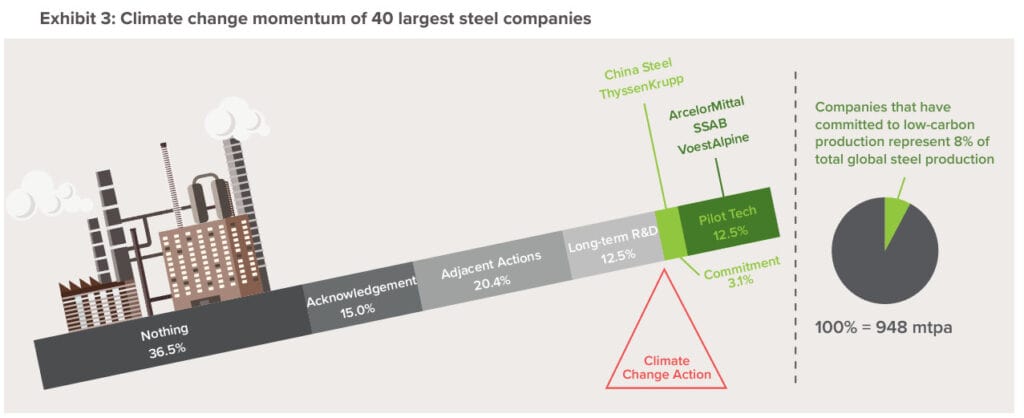
The 3 Processes
Steelmaking can be broken down into three process steps:
- Reduction.
- Transformation
- Forming
Reduction.
Oxygen in the iron oxide is stripped from the iron oxide ore by the carbon monoxide produced from the burning of coke. The result is pig iron. Globally, about 70% of steel is produced using the blast furnace method. A complication is that as part of this process, processed coal (also known as coke) is used in the main body of the furnace. It acts as a physical support structure for materials entering and leaving the furnace, among other functions. It’s also partially burnt at the bottom of the furnace to both produce heat and make carbon monoxide, which strips oxygen from iron ore leaving metallic iron. (11). Hydrogen can replace the CO but its not 1:1. More heat is needed, and the solid structure provided by coal also needs an alternative.
Transformation
Pig iron is alloyed with other minerals such as nickel, chromium, manganese, or molybdenum. This creates a crude steel material with the physical properties required in the final application.
Forming
Steel is formed through a series of hot and cold processing steps into the final shape that the customer will use.

All steps are energy-intensive, since the metal needs to be heated up to be malleable. However, the bulk of the CO2 emissions originate from the iron ore reduction process.
The Modern Steel Production Landscape
Visual Capitalist has good data here. The two main methods of steel production are:
- electric arc furnace (EAF)
- blast furnace basic oxygen furnace (BF-BOF) production.
Both methods traditionally use fossil fuels, and in 2019 contributed 3.6 Gt of carbon dioxide (CO2) emissions:
| Steel Production Method | Materials Utilised | CO2 Emissions (2019) |
| EAF | Scrap | 0.5 Gt |
| BF-BOF | Scrap, iron ore, coke | 3.1 Gt |
A hybrid green steel method uses hydrogen to reduce the iron pellets into sponge iron and then into steel. The process requires high temperatures but below the melting point of iron (800-1,200°C), saving energy costs.
Green Steel Production Options
Four different approaches are being trialled.
1. Hydrogen-based Direct Reduced Iron (DRI)
Green Steel: Decarbonising with Hydrogen-Fueled Production
- Process. Reduce iron ore with hydrogen instead of coke. Eliminate coal reliance and significantly reducing CO2 emissions.
- Technology. Hydrogen production plants (electrolysers), DRI reactors, furnaces for melting DRI.
- At 800°C temperature. This is a hybrid system.
- Projects. HYBRIS (Sweden), HYFOR (Germany), H2 Green Steel (Sweden), Primetals Technologies (Germany).
- Advantages. Potentially near-zero carbon footprint with green hydrogen, high flexibility in fuel sources.
- Challenges. Enormous quantity of H2, and the cost of green hydrogen and the associated infrastructure development for hydrogen transport and storage.
| Steel Production Source | Annual Steel Production | Green Hydrogen Required | Electrolyser Capacity Required | Total Renewables Capacity Required |
| Base Reference | 1 Mt | 50 kT | 0.56 GW | 0.7 GW |
| U.S. | 85.8 Mt | 4.3 Mt | 48 GW | 60 GW |
| Europe | 103 Mt | 5.2 Mt | 58 GW | 72 GW |
| China | 1032.8 Mt | 51.6 Mt | 581 GW | 726 GW |
| Global | 1951 Mt | 97.6 Mt | 1,097 GW | 1,371 GW |
There is no need to wait for 100% renewable hydrogen production to decarbonize steelmaking, since the current global average grid power is sufficiently low carbon to break even with conventional blast furnace processes.
Projects
| Project | Country | Notes | Website |
|---|---|---|---|
| HYBRIT (includes SAAB & Vattenfall | Oxelösund, Sweden | Making process open to other Already have vehicles made with green steel. First steel in 2021 1.3m tonnes per year (annual production is over 8.8mt) | https://www.ssab.com/en/fossil-free-steel/insights/hybrit-a-new-revolutionary-steelmaking-technology |
| HYFOR | Germany | ||
| H2 Green Steel | Boden, Sweden | Construction of plant in progress, raised €6.5b, 5m tonnes steel 2030 | https://www.h2greensteel.com/ |
| Primemetals Technologies | Germany | ||
| Salzgitter Salcos | Germany | https://salcos.salzgitter-ag.com/en/salcos.html | |
| Blastr (with Cargill and Fortum) | Norway | https://www.blastr.no/ | |
| Boston Metal | Woburn, MA, USA | Using Molten Oxide Electrolysis (MOE) process Commericialisation by 2026 | https://www.bostonmetal.com/ |
2. Electric Arc Furnaces (EAFs).
- Process. Use recycled steel scrap and melt in electric furnaces powered by renewable energy.
- Technology. EAFs, scrap processing facilities, renewable energy sources.
- Projects. Big River Steel (Arkansas, USA), Nucor (USA), ArcelorMittal (worldwide).
- Advantages. Leverage existing infrastructure. Lower investment compared to new greenfield plants.
- Challenges. Limited to using scrap, cannot produce steel from scratch, and relies heavily on renewable energy availability.
3. Molten Oxide Electrolysis (MOE)
Boston Metals has an MOE process. This direct approach eliminates several steps in the steelmaking process and does not require coke production, iron ore sintering and pelletizing, blast furnace reduction or basic oxygen furnace refinement.
For more information check out MOS article
4. Biomass-based Reduction.
- Process. Use biochar or biogas instead of fossil fuels to reduce iron ore.
- Technology. Biomass gasification plants, DRI reactors, furnaces for melting DRI.
- Projects. SSAB (Sweden), voestalpine (Austria), BlueScope steel (Australia).
- Advantages. Renewable and potentially carbon-negative source of reduction agent.
- Challenges. Biomass availability and sustainability concerns, higher emissions compared to green hydrogen.
4. Carbon Capture and Storage (CCS).
- Process. Capture CO2 emissions from traditional blast furnaces and store them underground.
- Technology. CO2 capture plants, transport infrastructure, and storage sites.
- Projects. Northern Lights (Norway), Petra Nova (USA), Quest CCS (Canada).
- Advantages. Add to existing infrastructure. CCS reduces emissions but doesn’t eliminate them.
- Challenges. High cost, leakage risks from storage sites, public perception concerns.
For a more detailed look at CCS see this article.
Comparison of Methods
Bostal Metals has this simplified diagram. They have progressed to a small industrial process. Scaling is up to 200kA level.

Hard to Abate or Fast To Abate
The steel sector can play a key role in this. Often labelled as a hard-to-abate sector, the steel sector has the potential to turn into a fast-to-abate sector. The Agora Study demonstrates that a net-zero iron and steel sector by the early 2040s is technically feasible. They had 4 conclusions
- Hard-to-abate can be fast-to-abate with an increase of scrap- and hydrogen-based steelmaking plus bioenergy and carbon capture and storage (BECCS).
- Green iron trade. Transporting embodied hydrogen (H₂) as green iron will be significantly cheaper than transporting H₂ and its derivatives by ship.
- CCS is unlikely to work
- Requires government intervention and agreed policies
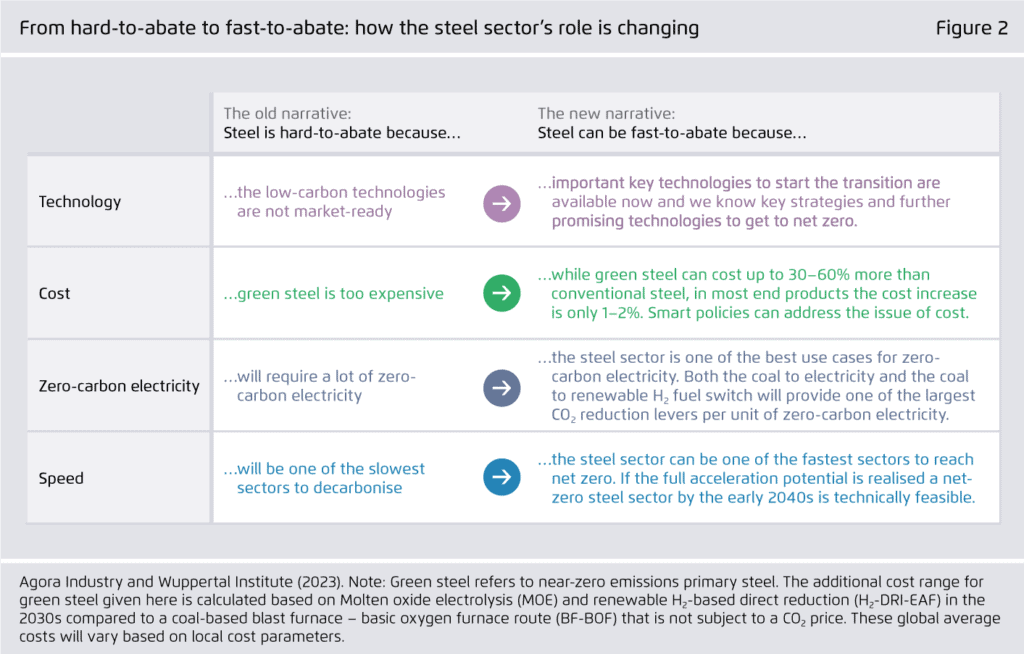
More Reading
- What is green steel and why does the world need more of it? World Economic Forum 2022 https.//www.weforum.org/agenda/2022/07/green-steel-emissions-net-zero/
- World Steel Association. https.//worldsteel.org/steel-topics/sustainability/sustainability-indicators-2023-report/
- Hydrogen Council. https.//hydrogencouncil.com/en/
- Clean Air Task Force. https.//www.catf.us/
- Green Steel: Decarbonising with Hydrogen-Fueled Production Visual Capitalist 2022 https://www.visualcapitalist.com/sp/green-steel-decarbonising-with-hydrogen-fueled-production
- The Disruptive Potential of Green Steel RMI 2019 https://rmi.org/wp-content/uploads/2019/09/green-steel-insight-brief.pdf
- The Transformation of Global Steel Making — Huge Potential
- 15 insights on the global steel transformation Agora Industries https://www.agora-industry.org/publications/15-insights-on-the-global-steel-transformation
- How can we make steel green? July 2022. https://www.dw.com/en/green-steel-climate-solutions-coal-carbon-capture-storage-hydrogen/a-62011017
- Stefan Pauliuk, Tao Wang, Daniel B. Müller, Steel all over the world: Estimating in-use stocks of iron for 200 countries, Resources, Conservation and Recycling, Volume 71, 2013, Pages 22-30, https://doi.org/10.1016/j.resconrec.2012.11.008
- Green steel is hailed as the next big thing in Australian industry. Here’s what the hype is all about. https://theconversation.com/green-steel-is-hailed-as-the-next-big-thing-in-australian-industry-heres-what-the-hype-is-all-about-160282
- Green Hydrogen making Green Steel. Is 2024 the breakthrough year? YouTube Just Having a Think https://www.youtube.com/watch?v=QwtQS146tak
- CO2-Free Fe: Green Steel Tour with Boston Metal Engineering with Rosie https://www.youtube.com/watch?v=GJKoBgBCPW0&t=0s
Warning: Future Demand for Steel
One of the traps of the future is expecting the current scenario remains the same. if Allwood is correct, the world will be a different place than today and future demand for steel.
The global steel industry today has more capacity for making steel from iron ore than it will ever need again. Steel products last 35-40 years average. Steel is magnetic and enables 90% of all used steel to be collected. The supply of steel collected from goods at the end of their life therefore lags the supply of new steel by about 40 years. While global steel demand continues to grow, future growth may be met by recycling the existing stock of steel. (Allwood 2013)


